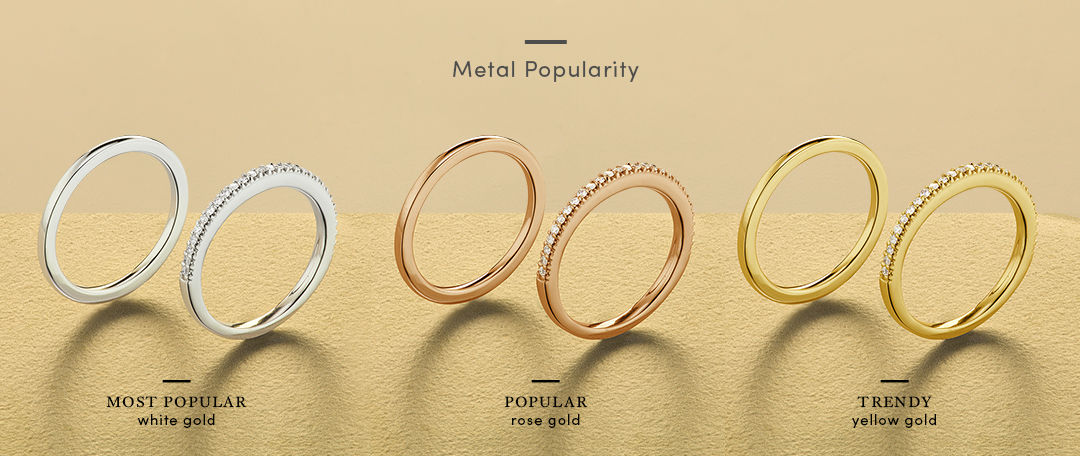All that glitters is not gold but we sure do wish it were. Midas may have taken it too far but a gold thing or two would come in handy even today. It is after all a precious metal, that was at one point considered a high denomination currency for Kings and Queens to bestow upon their subjects. Even today it is a highly regarded reserve asset held by banks and governments as a hedge against paper currency.
The earliest forms of gold jewellery have been unearthed in a Bulgarian cemetery in the 1970s and date back to 4600-4200 BC. A dense but soft and malleable metal with an alluring glaze, gold is prevalent across the globe but highly concentrated in Africa and India. More than half the world’s gold is in the form of jewellery while the rest is turned into coins or bullions.
Refined gold in its pure form is soft and prone to scratches and deformity with wear and tear. For this reason, gold jewellery uses gold alloy to craft breathtaking pieces that are durable and precious. The gold in jewellery is measured via the Karat (K) metric. The gold spectrum:
24K: This is 99% pure gold which serves well from a purity perspective but is better left to gold coins or bullions. In jewellery this tends to be too soft and easily damaged, hence avoided.
18K: This is 18 of 24 parts pure gold which is 75% gold and 25% metals like Zinc, Copper, and Palladium. This has a rich yellow colour and is scratch-resistant and durable unless the ring or jewellery piece is made too thin.
14K: 14 parts pure gold, this alloy has 58.5% gold and 41.5% other metals. As the purity of the metal reduces, the strength increases and malleability reduces. While 14K gold is stronger, it loses its richness of colour.
10K: 10 parts pure gold which has 42% gold and 58% other metals. While this purity of gold is less expensive and stronger, it is harder for setting and lacks a good colour. The intrinsic value of this reduces also because it may cause skin allergies.
The price of gold jewels is also dependent on the Karat of the gold used. Hence, always ask your jewellery for hallmarked jewellery to know exactly what is the purity and therefore value of the piece in question.

Source: https://www.withclarity.com/education/metal-education/gold-jewelry
Tone It Up A Notch: Gold jewellery comes in three colour tones – yellow, white, and rose.
Yellow Gold: The authentic and timeless version of gold that is made using varying amounts of zinc and copper in degrees to give varied shades of yellow gold. It never loses colour, needs little maintenance, and goes with a wider range of skin tones. It’s the most hypoallergenic of all the variants of gold and therefore least likely to trigger a skin reaction.
White Gold: Yellow gold when mixed with metals like palladium and silver produce white gold. However, this alone does not sport a lustrous white hue unless given an external polish of rhodium. Once polished, this works as a great substitute for Platinum. Over time, however, it needs to be repolished as it gains a yellow tinge.
Rose Gold: Modern gilded luxury has this romantic, rose-colored hue that is bright about by mixing yellow gold with copper. For lighter tones, a small trace of silver is added to the mix as well. Strong and scratch-resistant yet delicate-looking – like all things feminine – this shade of gold goes well with pave set diamonds and complements most skin tones.

Source: https://www.doamore.com/wp-content/uploads/2015/03/platinum-vs-gold-vs-white-gold.jpg
Gold v/s Platinum
A malleable and durable metal, Platinum gained popularity in the late 1800s in jewellery. However, around the time of the first World War, it was all but forgotten. When used in jewellery, Platinum is too soft to use on its own. Hence it is mixed in the ratio of 950:50 of Platinum to other metals like palladium, rhodium, and iridium. This precious metal is the strongest for holding gemstones in jewellery. However, it is more prone to scratches and deformity, especially when moulded too thin. Gold being more widely available is better priced than Platinum, and most people use white gold as a direct substitute for durability and feasibility.
Dream Diamonds offer a timeless collection of lab-grown diamond jewellery set in gold of various hues – all Hallmarked by a trusted assay laboratory. From regal yellow gold bracelets to scintillating white gold solitaire bands to dreamy, danglers with their rose tint – there is a distinguished range of choices for everyone who wants beauty without farming the planet.


